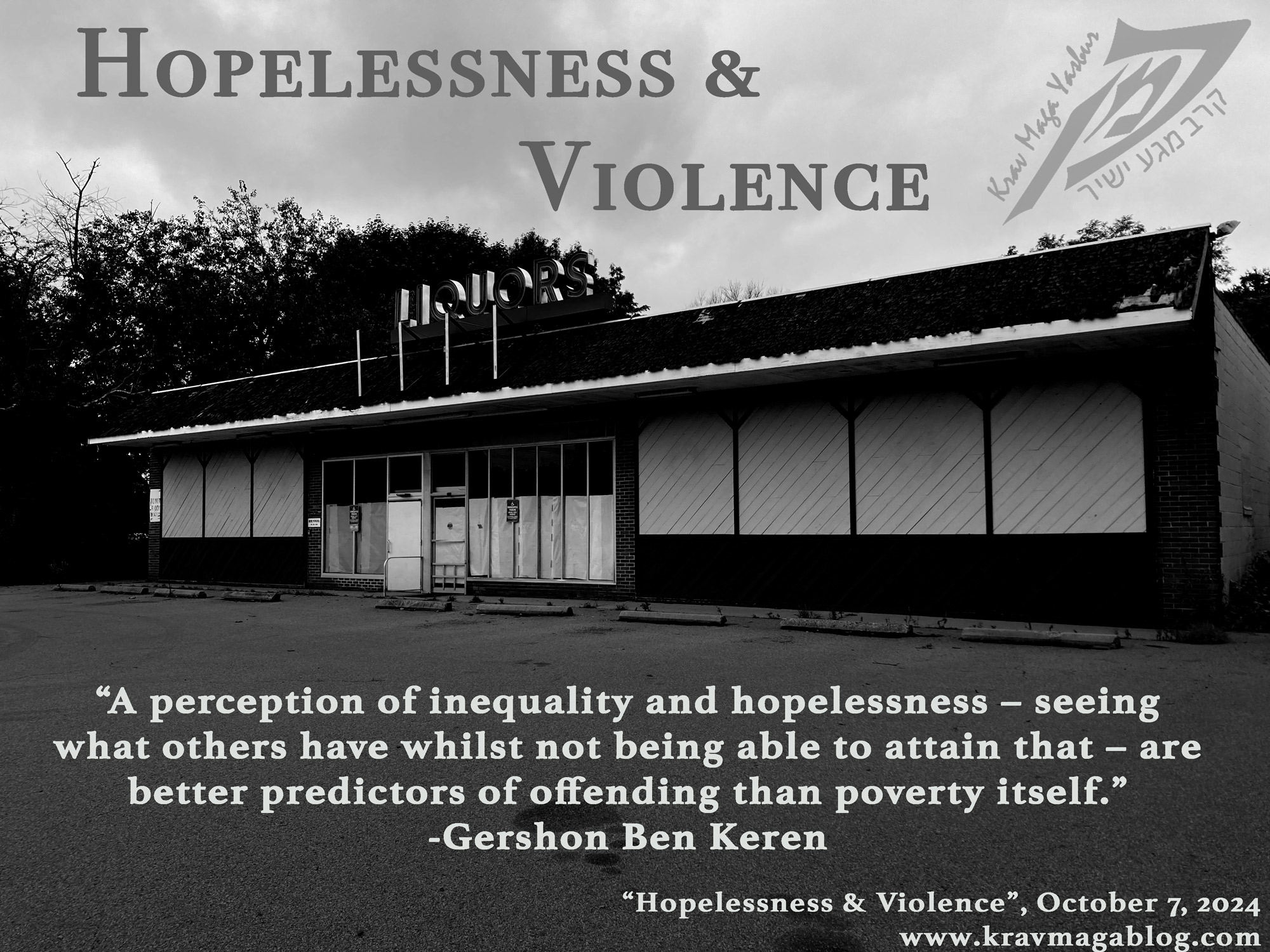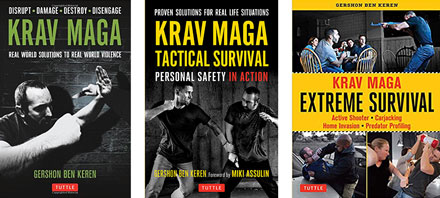Hopelessness & Violence

Criminologists Jack Katz and Randall Collins have made the case that crime and violence in the social sciences tends to be explained by referencing and directly linking the criminal and/or violent act to something else e.g., violent offending is the result of childhood neglect or the result of lead exposure etc. Often, the social sciences look to a specific cause in order to explain a certain effect, and if not establishing a cause, then at least a correlation. One “relationship” that has been persistent within criminology is that of poverty and crime, even though statistically the relationship has been shown to be a weak one e.g., crime rates, including violent offenses, have gone up as the standard of living has increased and poverty has been reduced etc. However, anecdotally we understand that less well-off neighborhoods are often places that we don’t want to find ourselves in due to a perceived risk of crime and violence, and there is evidence to support such beliefs. However, it may not be that poverty itself is directly linked to crime, but something that poverty can produce, possibly not universally but for certain individuals and communities. In this article I want to examine the role that hopelessness may play in crime and violent offending and how the perception of inequality that is linked to this may play a part.
I have written before about how the Chicago School in the early part of the 20th century saw crime as the result of poverty and the solution to crime being the reduction of it i.e., you make people better off, and the crime rate is reduced. This widely held belief was challenged in the post-war period, as crime, including violent offending exploded (up until the mid-90’s, since when it has consistently, regardless of a few very minor blips, been dropping), despite employment rates and the standard of living increasing dramatically. One of the theories that attempted to explain this was Routine Activities Theory (RAT). RAT argued that as people started spending more time engaging in leisure activities away from the home, such as socializing in public spaces, the opportunities for crime and violence increased i.e., crime and violent offending was determined more by opportunity than poverty. Something that explains middle-class people scanning avocados as onions at self-checkouts; they do so because they have the opportunity to do so, rather than being driven by poverty; they may justify their actions by arguing to themselves, and possibly others, that shops and supermarkets engage in “price gouging” and they are simply rectifying this etc. However, whilst incidents of offending may be affected largely by opportunity, it would be naive to say that poverty plays no part in crime and violent offending, as just from our own knowledge and experiences the “bad parts” of town tend to be located in less economically advantaged areas, even if they are not the warzones we might imagine.
Rather than look at the link between poverty and crime it may be more productive to look at some of the things that poverty can create and result in; things that may be more significant in certain communities than others, which would explain why not all economically disadvantaged locales have high crime rates. Poverty in certain social situations can create an atmosphere of hopelessness i.e., a state of despair, where nothing will ever get better, along with uncertainty and negative thoughts concerning the future. There may be some who accept this and get on with their lives, whilst there may be others who react/respond to this, possibly by engaging in crime and violent crime, which may in and of itself become contagious e.g., an individual “denied” an opportunity to make a decent wage may turn to dealing in drugs, which involves the use of violence, which others in the community observe and see and then emulate the violence in non-drug related situations and scenarios (social learning theory). Hopelessness amongst young people has been seen as a significant risk factor for violence, that is associated with weapon carrying and other forms of violence. The fact that the majority of violent offenses in America are committed by young people (under the age of twenty-five), youth hopelessness is a significant factor in violent offending. A sense of hopelessness experienced by young people is also a risk factor for intimate partner violence i.e., it is pervasive and isn’t just directed outwards towards strangers. Hopelessness is also associated with substance abuse, something that can bring individuals into social networks where crime and violence can be a prevalent factor. Hopelessness has also been shown to be an instrumental element in individuals adopting the “code of the streets” rather than normal societal values and rules etc. If a certain way of thinking and behaving isn’t believed to be productive in some way, shape or form there is a reason why someone might adopt a different value system. This is one of the reasons why a sense of inequality and hopelessness may push people into a more “rewarding” life of crime.
The links between perceptions of inequality and crime appear to be stronger than those between poverty and offending. Research has show that when individuals recognize and perceive that they are less economically successful than others, and that legitimate avenues to address this aren’t available to them there is a significant/increased risk in them turning to crime. A perception of inequality and hopelessness – seeing what others have whilst not being able to attain that – are better predictors of offending than poverty itself. Whilst there may not be a direct link between poverty and crime e.g., in communities that may be economically disadvantaged but maintain an optimism about being able to address this, members may not consider engaging in illegal activities, whereas when this leads to a sense of hopelessness this may not be the case.
 If you enjoyed reading this article you may be interested to read Gershon Ben
Keren's Books (Click on images to go to his Amazon Author's Page). Or If you live in Boston or a surrounding city etc. you may want to sign up for a beginner class,
using the button below.
If you enjoyed reading this article you may be interested to read Gershon Ben
Keren's Books (Click on images to go to his Amazon Author's Page). Or If you live in Boston or a surrounding city etc. you may want to sign up for a beginner class,
using the button below.
Beginner Classes